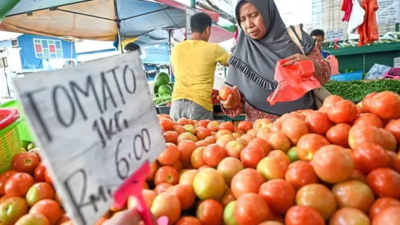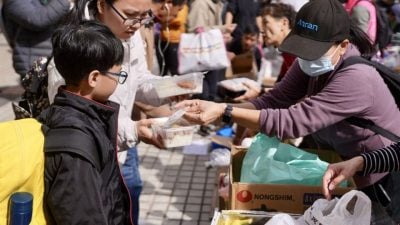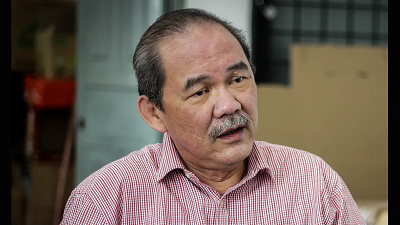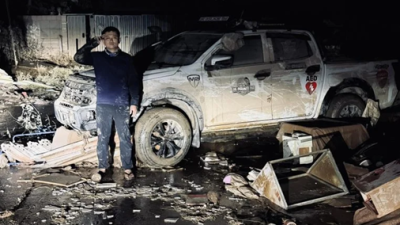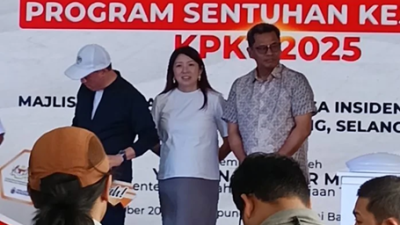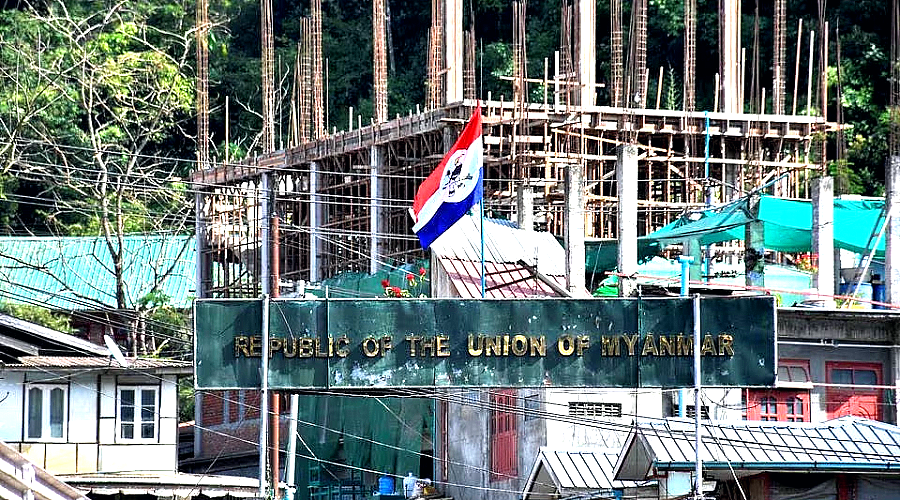
It has been many weeks since the Three Brotherhood Alliance launched an unprecedented coordinated offensive against the military junta in Myanmar on October 27, named Operation 1027.
The junta has lost control over a swath of lands in the east since the Karen forces now control 80 percent of the territory, and the battle for the capital Loikaw is on.
While Chin forces established their control over 70 percent of the state along the Indian border, in the west, the Arakan Army has taken over key military bases in Rakhine as it breached the ceasefire in November.
Part of the Three Brotherhood Alliance, the Myanmar National Democratic Alliance Army (MNDAA), has begun an offensive to capture the capital of the Kokang region, Laukkaing.
In Kayin State, Karen forces have taken partial control of the main highway to the Thai border, which is a huge blow to the junta as this will hinder border trade with Thailand.
Such a military breakthrough in the “world’s longest-running civil war” should not come as a surprise to observers who have been keeping a keen eye on Myanmar.
Events following the 2021 coup d’état created a context for a “black swan” moment, where the disenfranchised civilian populace across their ethnic divides are turning against the Tatmadaw and the theory that the “military is holding the country together.”
As the war nears urban centres, the call for a political solution from Myanmar’s junta leader, Min Aung Hlaing, seems like a desperate measure to save a burning house.
He reiterated that the casualty of this ongoing war would be the civilian population.
In his opinion, the military regime will not accept any action that threatens the “three main national causes,” which entails Tatmadaw’s three-part political ideology: non-disintegration of the union, non-disintegration of national solidarity, and perpetuation of sovereignty.
However, through this offensive, the taste of blood that the Ethnic Armed Organisations (EAOs) and People’s Defence Force (PDF) have gained have made any prospect for political negotiation with the retreating junta difficult.
However, a few EAOs—such as the Restoration Council of Shan State (RCSS)—might honour the Nationwide Ceasefire Agreement (NCA), while others may press for a federal system that will give autonomy to their respective ethnic groups vis-à-vis the 68-percent Bamar majority.
Unlike the 1988 coup, the ruthless violence that ensued to suppress the resistance following the 2021 coup galvanised most of the EAOs and the civilian population.
Unless regional and extra-regional powers intervene diplomatically at the cost of their already deteriorating image within the country, it will be difficult for the junta to gain any meaningful external support to quash the resistance.
Many of these powers went on with their business-as-usual relations with the military junta while the civilian population suffered indiscriminate air raids, heavy artillery fires, arson, destruction of villages, and brutality from the Tatmadaw.
Only last week, the junta foreign minister Than Swe met his Chinese counterpart Wang Yi on the eve of the Lancang-Mekong Cooperation Foreign Ministers’ Meeting.
Perhaps the main reason for this meeting was to bring in China as a mediator to hold political dialogue with the advancing Three Brotherhood Alliance.
China’s reaction was measured as Wang Yi said China would not meddle in Myanmar’s domestic affairs and hoped it would “achieve national reconciliation” and “continue its political transformation process under the constitutional framework as soon as possible.”
The future of Chinese-sponsored infrastructure projects in Myanmar, such as the Kyaukphyu deep-sea port in Rakhine state and the railroad linking Rakhine with Yunnan Province via Mandalay, were discussed.
To keep Beijing on its side, the junta promised an accelerated pace for these projects which have strategic significance for China in the Bay of Bengal region.
Given the current course of the war, it is unlikely that China will move away from its principle of non-interference by using its sway over the fighting EAOs.
However, in the last week of November, three Chinese warships conducted joint live-fire drills by making a port of call in Myanmar, which signals Beijing’s support for the regime vis-à-vis the external and internal audiences of the region.
In a similar pattern, in the first week of November, the Russian navy held the “first Russia-Myanmar Naval Exercise” in the Andaman Sea, which many observers perceive as Moscow’s attempt to increase its strategic presence in the Eastern Indian Ocean region.
Despite India being a key partner of the US and Japan in the Indo-Pacific, Russia’s growing interest serves the larger strategic goal for New Delhi to achieve a multi-polar world, which it thinks is only possible by ensuring a multi-polar Asia.
Last week, a foreign office consultation was held in New Delhi between India and Myanmar.
In this significant exchange, India expressed its support for Myanmar’s transition towards a federal democracy and opined that a peaceful resolution or a return to democracy is the way forward.
This signals New Delhi’s concerns and impatience regarding the junta’s ability to handle the ongoing civil war, as the number of Myanmar refugees taking shelter in India’s northeast is soaring by the day.
Over the last couple of years, the resistance movement not only showed great resolve in the face of brutal counter-insurgency operations, but have thrived with training and arms from insurgent groups such as the Karen National Union and the Kachin Independence Organisation.
Despite such popular domestic support for the resistance, how the exiled National Unity Government (NUG) of Myanmar unites the fighting EAOs under its leadership remains to be seen.
Any direct Western support for the resistance, either from the European Union or the United States, will require some measure of legitimacy as most of these countries do not have any formal connections with the EAOs.
Although the Burma Act provides the US with the legal basis to engage with the opposition forces, conflicts such as the Israel-Hamas war and Russia-Ukraine war will most likely keep the Western powers preoccupied.
Should the military regime fall, without a common enemy, the EAOs might turn against one another.
Consequently, the fate of the remaining Rohingya population in the Rakhine state might be at the mercy of an EAO such as the Arakan Army.
This should be a great concern for Bangladesh, as it is already burdened with more than 1.2 million Rohingya refugees.
Despite the coup of 2021, Myanmar’s Southeast Asian neighbours, such as Laos and Thailand, largely maintained warm relations with the junta.
On the other hand, the divergence within the Association of Southeast Asian Nations (ASEAN) member states has made this regional group largely defunct in compelling Myanmar to follow through with the Five-Point Consensus.
In the coming days, regional and extra-regional countries might have to develop their own tool-kit to counter a range of likely scenarios: from humanitarian disasters to insurgent factions fighting for territorial control due to a power vacuum.
There is no doubt that neighbouring countries will have to bear the heaviest burden of such a crisis, and the playbook will not be the same for everyone.

ADVERTISEMENT
ADVERTISEMENT







